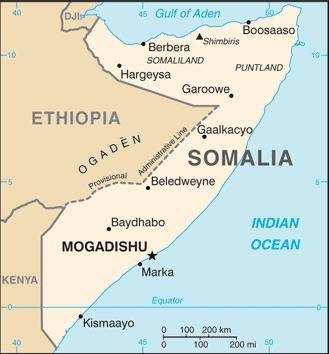US Africa Command announced that it launched an airstrike in Somalia on March 10 in support of the Mogadishu-based government, marking the second time the US bombed the country this month.
AFRICOM said the strike hit a target in the vicinity of Ugunji, a village about 44 miles southwest of Mogadishu.

The command claimed its “initial assessment” found three al-Shabaab fighters were killed and no civilians were harmed, but AFRICOM is notorious for undercounting civilian casualties, and US military operations in Somalia are shrouded in secrecy.
The last strike AFRICOM reported in Somalia took place on March 2, and the command claimed it killed two al-Shabaab members. It’s unclear if AFRICOM reports all US airstrikes in Somalia, as the CIA could also be carrying out covert drone strikes.
The latest US airstrike in Somalia came after journalist Nick Turse reported for The Intercept that the Pentagon was aware of fundamental flaws in its military operations in Somalia for nearly two decades, citing a 2007 study of the US campaign in the Horn of Africa. The US pressed ahead in Somalia without addressing glaring problems, and today, there’s still no end to the war in sight.
The US military hypes the threat of al-Shabaab due to its size and al-Qaeda affiliation, but it’s widely believed the group does not have ambitions outside of Somalia.
Al-Shabaab was born out of a US-backed Ethiopian invasion in 2006 that toppled the Islamic Courts Union, a coalition of Muslim groups who briefly held power in Mogadishu after ousting CIA-backed warlords.
Al-Shabaab was the radical offshoot of the Islamic Courts Union. The group’s first recorded attack was in 2007, and it wasn’t until 2012 that al-Shabaab pledged loyalty to al-Qaeda after years of fighting the US and its proxies.


